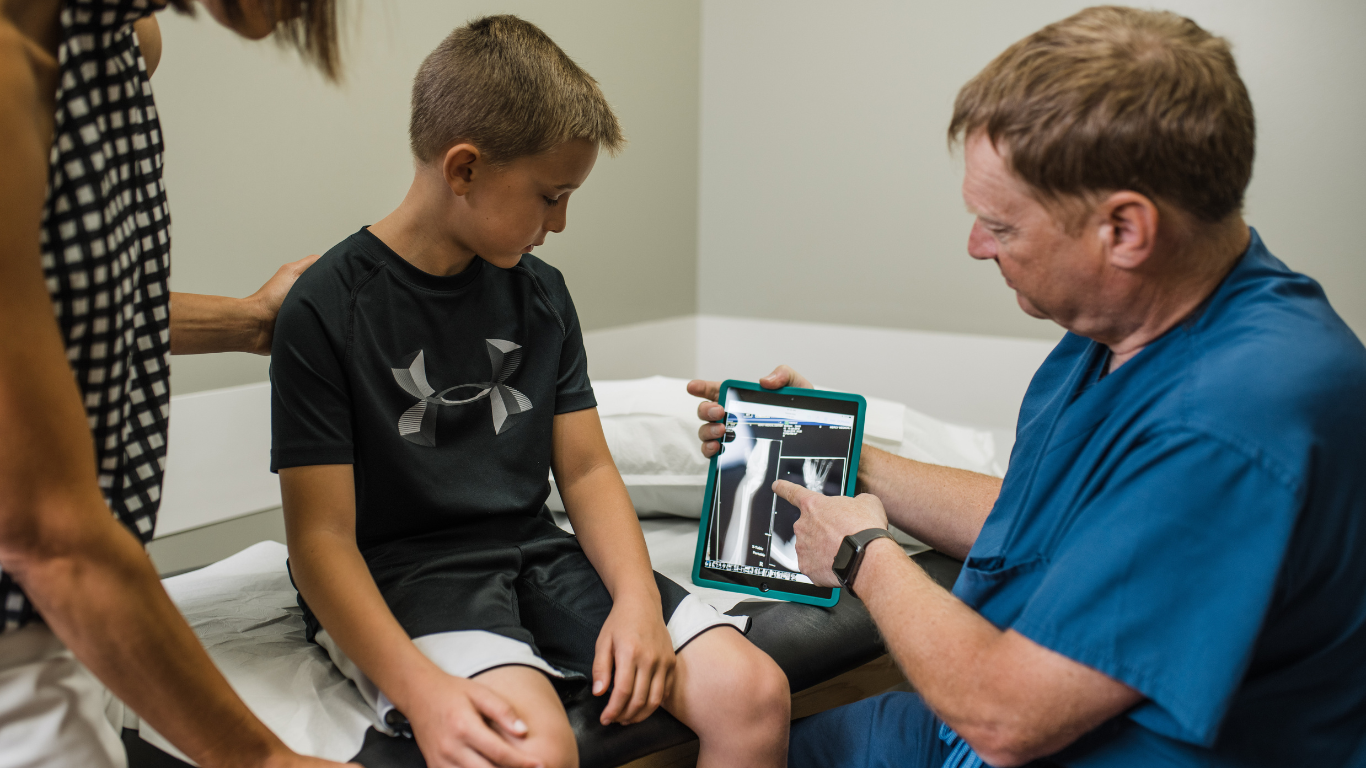
I had always been interested in orthopedics since the minute I entered medical school. I was fascinated with fixing things. My medical school and residency mentors were pediatric surgeons which inspired me to work with children. There’s nothing quite as satisfying as making a sick child well.
I treat a lot of different pediatric orthopedic conditions but one thing I see every day is growth plate fractures. For every clinic of 20 to 25 patients, I will probably see five or six growth plate fractures per clinic.
Parents are concerned about fractures in the growth plate and rightly so. The big reason why these are more serious than a standard fracture is that if the growth plate is injured, the bone can grow crooked or abnormally. One encouraging thing about growth plate fractures is that they heal faster than fractures in adults, generally healing in about half or 2/3 of the time that an adult fracture will heal.
There is a growth plate at the end of every bone in the body (i.e. the tibia, the femur, the forearm, and the fingers and toes, etc.). The growth plate is made out of cartilage, which makes it the weakest spot in the bone. The forces that cause a fracture will usually take the path of least resistance, which is through the soft spot or growth plate.
Growth plate fractures are diagnosed with a combination of patient history, physical examination, and imaging. I utilize plain x-rays every day. One issue that comes up a lot is that many growth plate fractures can be lined up so well that they cannot be seen on imaging; therefore, the most important thing in coming up with a diagnosis is the patient history and physical examination.
My mentors always emphasized to me that we don’t treat x-rays, we treat patients. Imaging, such as x-ray, CAT scan, MRI, etc. are just used as a guide. The most important thing is the patient. For example, I see many toddlers who have lower extremity injuries and the x-rays come back normal, but we can tell they’re not feeling well. By physical examination, I can usually ascertain where a fracture is at, but the patient’s history is quite important. If a two year old isn’t running around as they normally do, we know something is wrong.
The vast majority of growth plate fractures that I see can be treated conservatively in a splint, cast, or possibly a removable brace if the fracture is fairly minor. There are a few fractures that require surgery, most commonly in the elbow and the ankle. It’s somewhat of a judgment call on my part, but the fragments of the growth plate need to be acceptably aligned, if they aren’t then I reduce them (setting, which means straightening out). Most fractures are not severe enough to be operated on but may need to be reduced or set. Usually I will do those with the patient asleep under conscious sedation in the emergency room. Sometimes an operation may be required if the fragments of the growth plate aren’t aligned acceptably for conservative methods.
Call Iowa Ortho today for any pediatric orthopedic needs your child may have!
